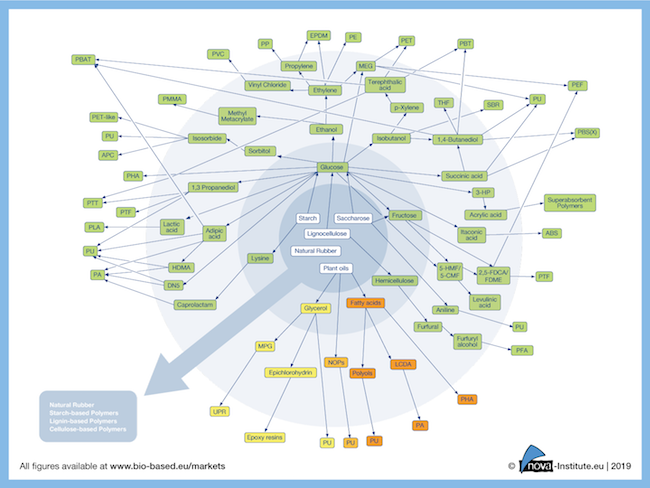
Germany-based nova-Institute (Hürth) has published Bio-based Building Blocks and Polymers – Global Capacities, Production and Trends 2018-2023, which shows capacities and, for the first time, production data for all bio-based polymers. In 2018, the total production volume reached 7.5 million tonnes, representing 2% of the production volume of petrochemical-based polymers. The potential for these materials is currently hampered by low oil prices and a lack of political support, according to nova-Institute.
The production of bio-based polymers has become much more professional and differentiated in recent years, said the report’s summary. “By now, there is a bio-based alternative for practically every application. The capacities and production of bio-based polymers will continue to grow with an expected CAGR of about 4% until 2023, almost at about the same rate as petrochemical polymers and plastics. Therefore, the market share of bio-based polymers in the total polymer and plastics market will remain constant at around 2%.
The increase is mainly a result of the expansion of polylactic acid (PLA) production in Thailand and polytrimethylene terephthalate (PTT) and starch blends production in the United States. New capacity for bio-based polyamides, polyethylene (PE) and, for the first time, polypropylene (PP) and polybutylene adipate-co-terephthalate (PBAT) will be added in Europe during the report’s timeframe. The great biopolymer hope, polyethylene furanoate (PEF), will only be available in commercial quantities after 2023, said nova-Institute.
Many processors know that they should implement a purge program but just don't know how to get started. This presentation will discuss what data to collect, how to collect it, and how to measure performance when you introduce purging to your process. Our purging expert will explain different tangible ways purging compounds can improve efficiency and will discuss several customer examples of how purge programs helped them reduce costs.
So far, the two major advantages of bio-based polymers have not been politically rewarded, said the research organization. The first advantage is that bio-based polymers are renewable, which is indispensable for a sustainable plastic industry, the report’s summary noted. The second, which is offered by about a quarter of bio-based polymer production, is biodegradability. Only a few countries—Italy, France and, in the future, probably Spain—will politically support this additional disposal path.
The most important market drivers in 2018 were brands seeking to offer customers environmentally friendly solutions and consumers looking for alternatives to petrochemicals. If bio-based polymers were accepted as a solution and promoted in a similar way to biofuels, annual growth rates of 10 to 20% could be anticipated, according to nova-Institute. If the price of oil rises significantly, bio-based polymers could gain market share in similar numbers.
[ add comment ] ( 47 views ) | permalink |




 ( 3 / 1963 )
( 3 / 1963 )

After winning eight different design competitions our Wine Pouch (R)evolution is now ready to open the next chapter of its development. The pack has already reinvented the traditional bottle, transforming it into an elegant pouch… but thanks to the partnership with Idealpack our has been developed even further: enter IDEAL WINE POUCH, with its new innovative IDEALCAP stopper!
Idealcap is new punch stopper that brings even more innovation to our original concept: it can be applied to any type of pouch or flexible bag, both in-line and otherwise. Idealcap offers a number of great benefits: it can be easily used even in sterile environment; it improves the product’s shelf life; and it helps to reduce wine oxidation. The basic Idealcap structure is built on the interaction of three different elements: the closing stopper, the punching device and the sealing base.
Another important piece of the development of this project is our strategic partnership with ROBINO & GALANDRINO, that allows us work on the filling and packaging phases.
Ideal Wine Pouch is the love fruit of two ideas that integrate perfectly with each other (both in terms of structural design and concept) because they share the same aim: to improve and innovate in the high-end wine market , by offering modern solutions to products and brands that aim, first and foremost, to achieve greater quality.
https://www.reverseinnovation.com/portfolio-item/wine-pouch-revolution/
[ add comment ] ( 78 views ) | permalink |




 ( 2.9 / 2088 )
( 2.9 / 2088 )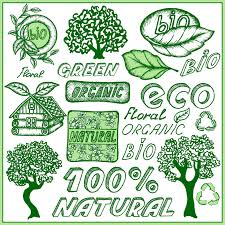
As a packaging designer and nature lover, I dream of the day when material science and manufacturing can deliver on the promise of zero environmental impact, high performance, premium finish and low costs. Many breakthroughs have begun to deliver on the promise - PaperFoam, recycled PET (rPET), and polylactic acid (PLA), to name a few.
But many of these materials still cannot compete on performance, and especially not on price. On the opposite end of the spectrum, commodity materials markets have been flooded with new eastern manufacturers, increasing the global supply and significantly lowering commodity materials costs.
Add to that the light-weighting movement in plastics bottling and single-stream recycling. Both test the long-term financial viability of the recycled materials industry, which collects on volume and is paid by weight.
The viability of true sustainability is a complex economic challenge, and the ugly truth is that very few consumers, brand owners or municipalities are willing to pay the premium price for cutting-edge, sustainable packaging solutions.
True solutions will come through systems thinking, which requires the material suppliers, manufacturers, retailers, consumers and municipalities to share in the premium costs and labor required to design, collect, and recycle packaging materials.
Over time, sustainable materials will become more available and thus less costly — but what to do now?
The answer is threefold:
* Stop looking for space-aged materials that will save the day
* Do more with what we’ve got
* Design with intent
10 principles to design sustainable packaging with intent
1. Start with commodity materials that are commonly recycled at major municipalities: a) PET, b) HDPE, c) Aluminum, d) Glass, e) Paper , f) Paperboards.
2. Design the package from a single material.
Single-material packages are easier to identify and separate during recycling.
3. Focus on the product-to-package ratio. The package should be as small as possible while still protecting the product and providing adequate branding real estate.
4. Design for assembly at the point of manufacture. Think through the assembly steps, as well as the use of hand labor versus automation. The more efficient the better.
5. Avoid gluing and laminations. Laminations and glue make it impossible to separate materials for recycling, and can negatively impact what would be an environmentally friendly package.
6. Design for distribution. Design primary, secondary and tertiary package from the beginning, looking to optimize all package dimensions for pallet efficiency.
7. Eliminate secondary and tertiary packaging when possible. Look for opportunities to make the primary package more robust, as well as combining functions of shipper and POP displays.
8. Design for disassembly. The end user will ultimately be responsible for cleaning and separating the packaging components for end of life. Use of the How2Recycle label is helpful in communicating what to do.
9. Clearly mark the materials on the packaging components. Design in-mold recycle codes or labeling to let consumer know what the material is.
10. Use Lifecycle Assessment (LCA) . Only in understanding the entire supply chain do you fully understand the true benefits (or costs) of your packaging materials.
Improvements in distribution could greatly offset a more premium material selection or increase in manufacturing complexity.

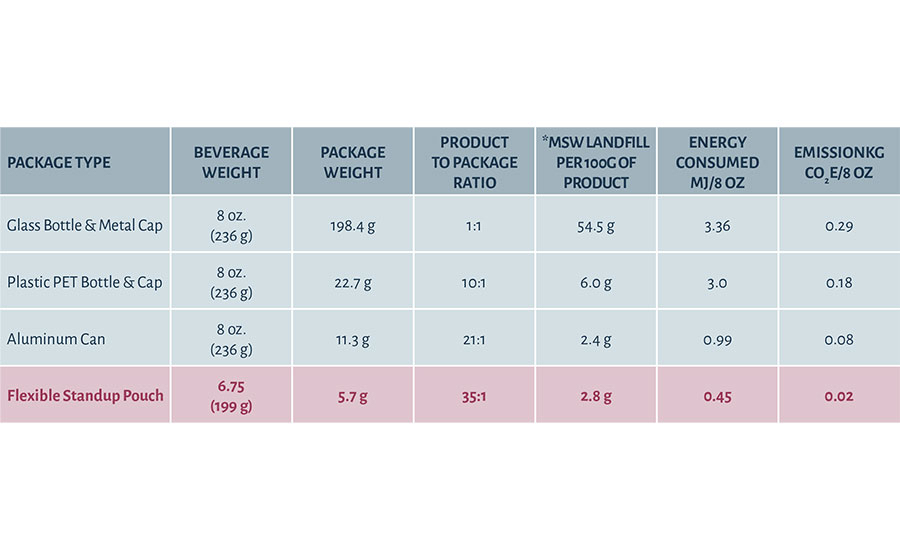
I hope for a brighter future when designing for sustainability can become a much more simple and straightforward methodology. Until the materials of the future significantly come down in costs, let’s keep designing with intent.

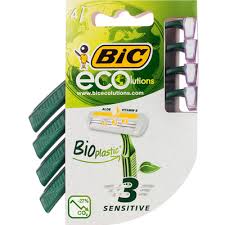
Edit By Bryan Shova
Industrial Design Director
Kaleidoscope
[ add comment ] ( 65 views ) | permalink |




 ( 3 / 2044 )
( 3 / 2044 )
Can you imagine a world without plastics? Use of this material is ingrained into our daily lives. It’s everywhere. Plastics are in our packaging, clothing, furniture, cars and more. Unfortunately it’s also found in soil, rivers, oceans and even our food.
Use of plastic packaging continues to grow because it is durable, lightweight, versatile and cost- effective. However, products and materials that have been successfully used for many years can become social pariahs. These days, it seems, the use of plastics in packaging is coming under increasing scrutiny.
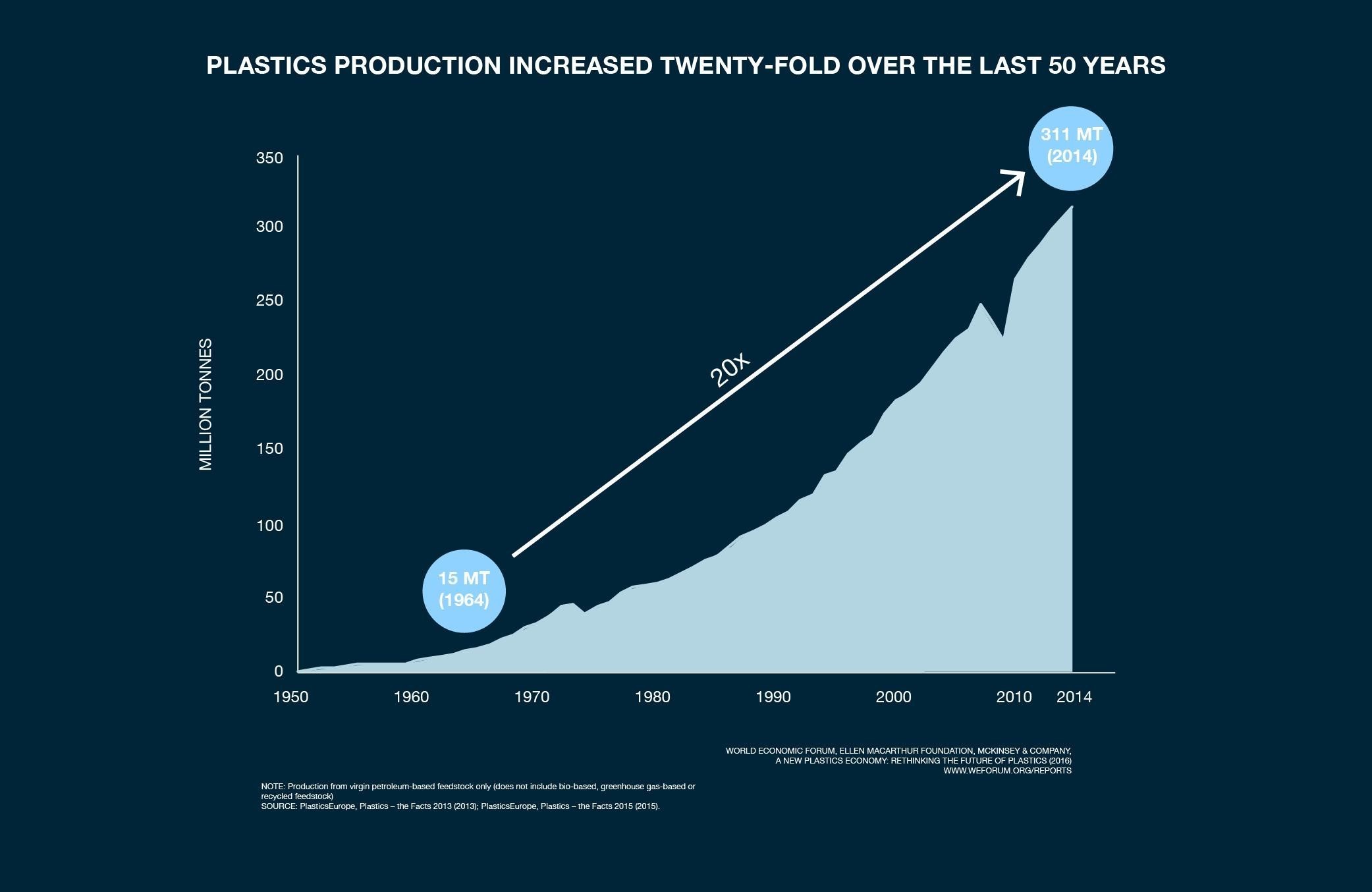
Plastics have considerable environmental impact. While most plastics can be recycled, many people don’t make the effort. The wide variety of resins used in packaging— often in combination —can complicate recycling efforts. Most people can’t identify the resin used unless the package has recycling prompts. One of the biggest concerns is that most plastics are not biodegradable. Consequently, plastics continue to build up, contaminating the environment and damaging food resources.

Pressure is on to either stop using plastic, change the types of plastic being used or make sure the material is easily biodegradable or recyclable. What is the industry to do? Several global consumer packaged goods companies have recently announced plans to make their packaging 100 percent reusable, recyclable or compostable within the next few years. One major U.K. retailer has gone even further, announcing that by 2023 it aims to have eliminated all plastic packaging from its store brand products.
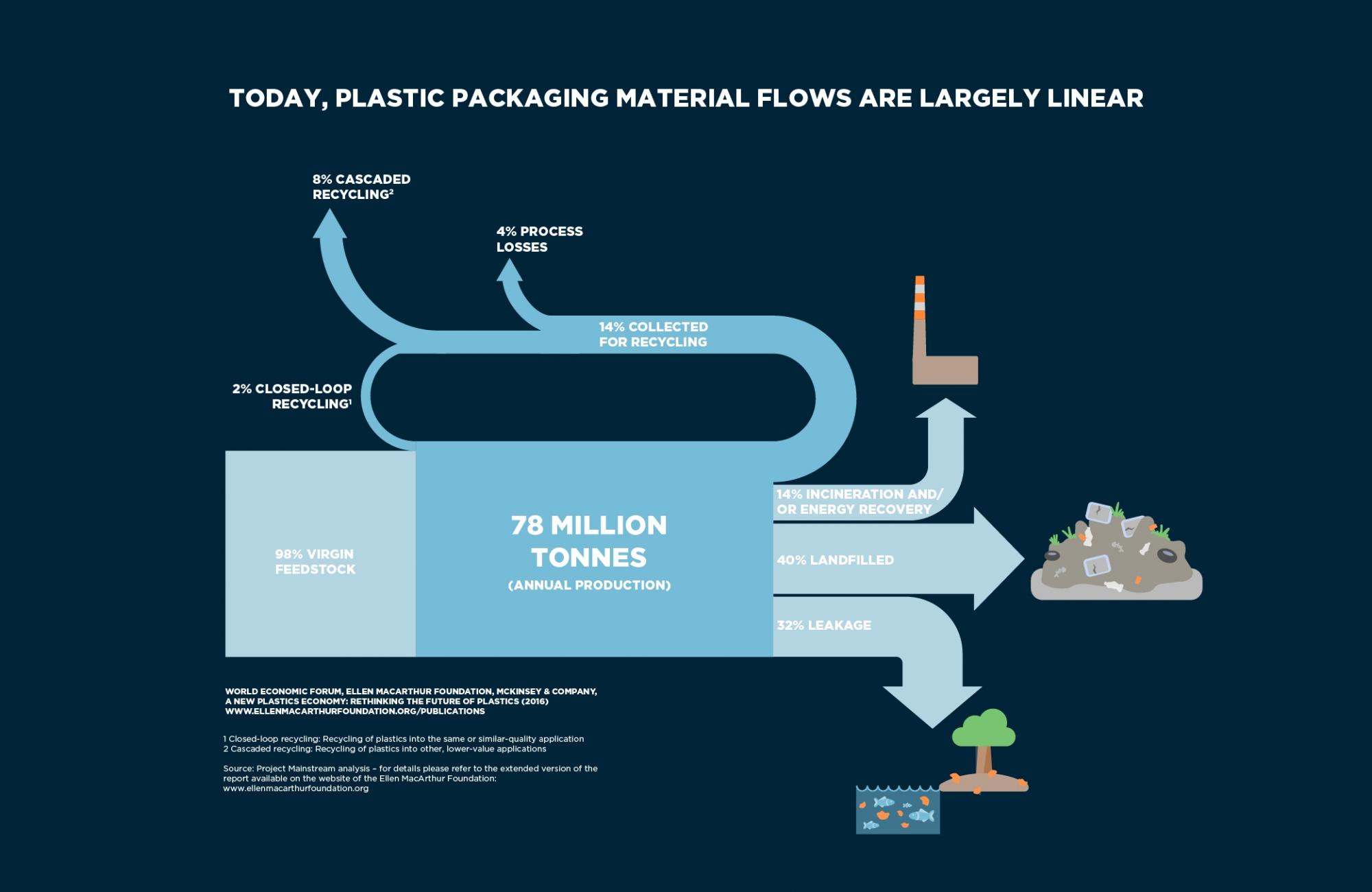
These are noble goals indeed. Surely, they can only be achieved through collaboration across the industry. Use of some types, such as polystyrene, may be eliminated altogether. Single-resin structures with enhanced barrier properties and transparency may be developed. But a world without plastic? Not likely.
Edit by
JOHN KALKOWSKI
Packaging strategies
March 2018
[ add comment ] ( 574 views ) | permalink |




 ( 2.9 / 1942 )
( 2.9 / 1942 )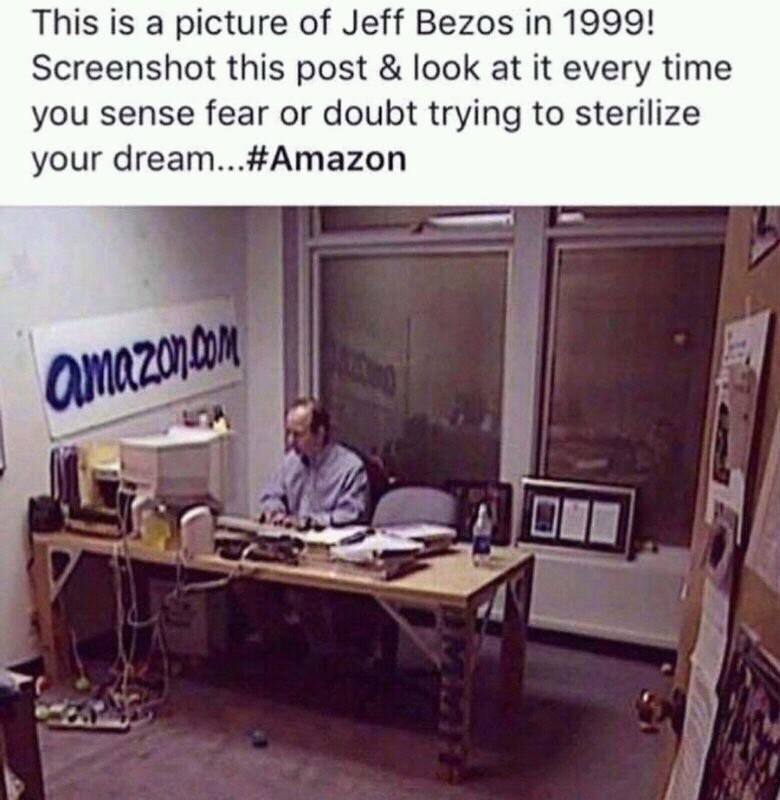
[ add comment ] ( 58 views ) | permalink |




 ( 3 / 1703 )
( 3 / 1703 )

 Calendar
Calendar